When Life Hand Your Neighbor Several Tons of Lemons…
… of course, you get ready to make 100 Gragg chairs!
Departing home the other morning for a manly breakfast with my woodworking friend TomS I encountered the roar of a chain saw and the necessary surrounding activities at my neighbor Bob’s house. As a dead-tree sorta guy, I was compelled to stop and check it out. It seems that Bob was removing some mature trees that had become a risk to his home. As someone who just last month replaced a chunk of roof as the result of tree damage, I am entirely sympathetic to the sentiment.
As I got close I saw the last vestiges of a red oak, standing stark against the sky. All I could think was, “There’s at least 100 Gragg chairs on the hoof!” I asked Bob if I could have it, and when he said, “Yes,” I asked the tree-trimmer to leave it in 5’ long logs for me on the ground.
When I returned from breakfast, there the 6′ logs were neatly on the ground awaiting my ministrations. And how magnificent they were! The bottom section was well over 36” diameter, and the successive ones an inch or so smaller. The upper two did have some branch stumps, but it looked like there was plenty of meat left to salvage.
Thus began my unexpected nearly two-week adventure (thus far; fitting it in amongst a full slate of home improvement projects in preparation for moving was, shall we say, domestically challenging) in reclaiming some spectacular wood from a suburban neighborhood, using only sledge and wedge. Fortunately TomS has tutored me well and the harvesting proceeded well. Not easily, but well.
With Bob’s grandchildren watching along with him and another neighbor, I began by identifying the natural fault lines of the log, and drove in the first wedge. Then another. And another. Within a couple minutes the cr-a-a-a-a-ck of sundered wood filled the air. BTW, Bob’s granddaughter C graciously agreed to take some pictures. I had hoped she could portray me as young, slender, handsome, rich, and suave. She mostly failed at that, although my loss of 85 pounds over the last 12 years is evident.
The kids and adults alike watched in wonder as over the next half hour or so I split a nearly 3,000 pound log in half.
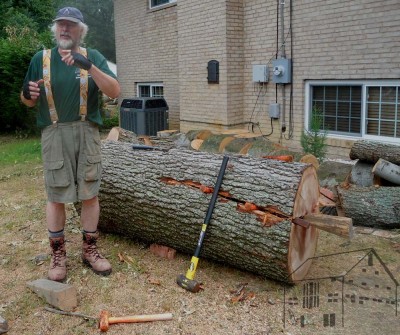
I had the pleasure of stopping periodically to explain what was happening to Bob and his grandkids. They thought what I was doing was almost magic.
Following the “Rule of Halves” that TomS taught me – always split a piece of wood in half to keep it balanced and splitting evenly – I then split the half into quarters, then the quarters into eighths, all on the radial plane.
In an hour or so I had those four sections free and ready for further work, all while using the lower half of the log as my “work platform.” I don’t do this sort of work regularly so I am pretty slow.
Moving the “eighths” to the ground I split them one more time into “sixteenths.”
They were still exceedingly heavy, too heavy to load into my truck (which was the ultimate goal for the exercise – they needed to be moved out of the way ASAP.)
So, each “sixteenth” was split but on the tangential plane, and each of those two 32nds were slated for a second tangential split.
The inner section was easily split with the pith being discarded into the firewood pile, but the sapwood was simply too squishy to split. I will return to them for that step perhaps in a month or so once it has dried a bit and will split more easily.
Sharp eyes will note that the splits have a bit of wind to them, perhaps 10 degrees give or take. While that might bring on the vapors to someone building 17th century board furniture, for me that is no problem. Virtually all of the elements I employ in constructing Gragg chairs have been reduced to approximately 5/8” x 1-1/4” cross sections, and once these are steamed they pretty much submit to my demands for them to conform to their bending forms.
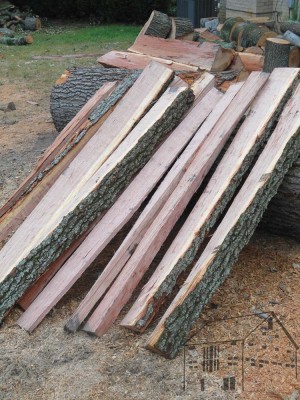
This was the harvest from the first QUARTER of the first of three logs! After I get done with this, it might be decades before I need to do it again.
It took me two pretty full days to harvest just the first (bottom) log. My arms hurt all the way to my knees, or perhaps it was my knees that hurt all the way to my shoulders. The yield, even with the inner quarter missing when I split off the pith, was probably close to 2,200 pounds. All I know was that my little truck was groaning as I loaded the pile and moved it to my place two houses down. Since wet oak is about 45% water that weight will diminish naturally over the coming months, and will be helped by a fairly rapid loss of about 1/3 as I split off the sap wood.
A complete full-arm/continuous-leg Gragg Chair requires about as much steam bent oak of the size of a standard 8-foot 2×4. At this point I think my inventory of raw materials is approaching 150 chairs. I only have two chairs commissioned thus far, but when I get more orders and have streamlined my process enough to host a workshop on building them, I’ll be ready.
But for now, I’m only 2/3 of the way towards getting these beauties out of Bob’s yard, to be followed by a lot more work getting ready for use and even more in making the chairs.
Stay tuned.

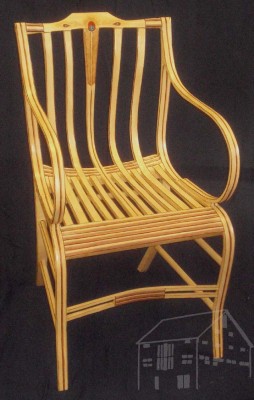
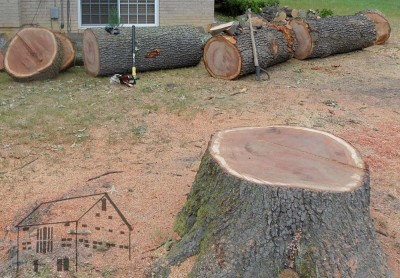
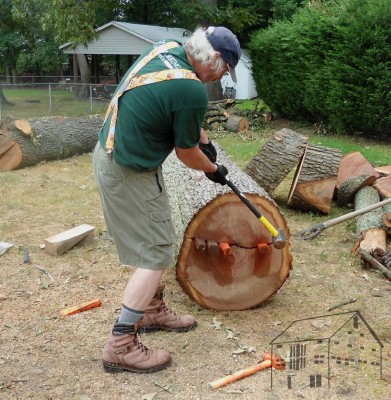
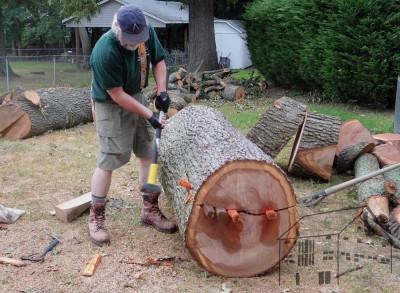
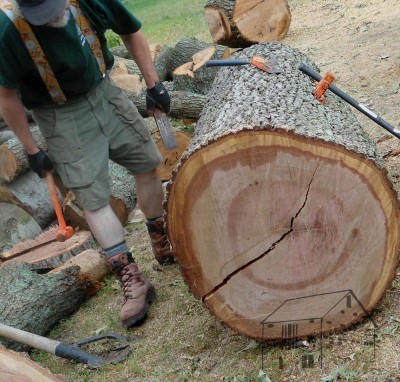
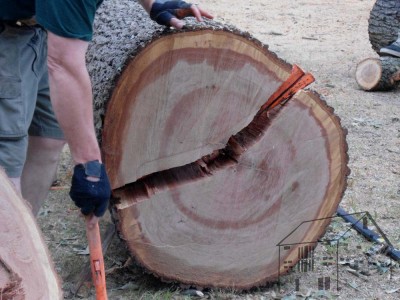
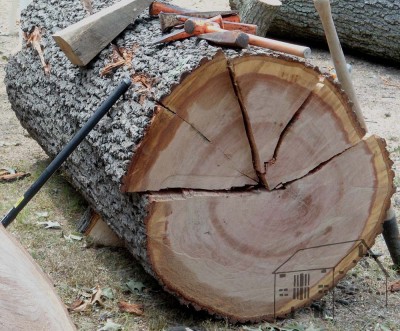
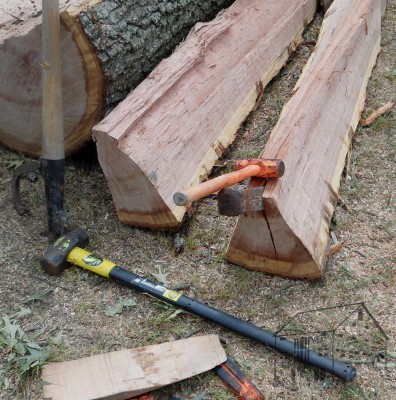
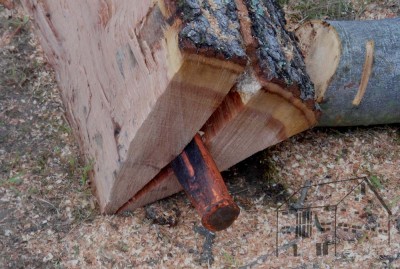
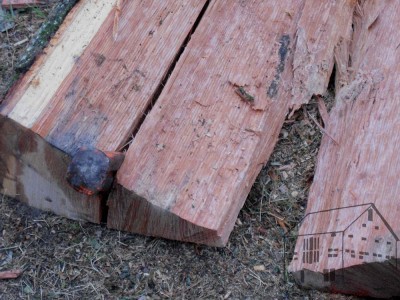
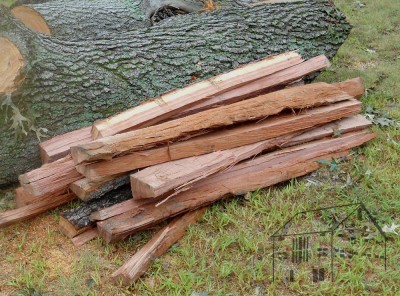

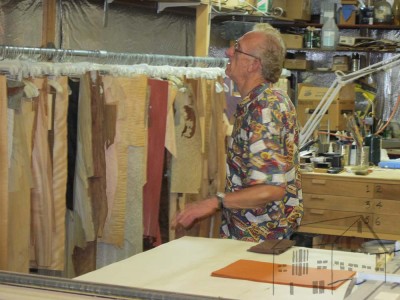
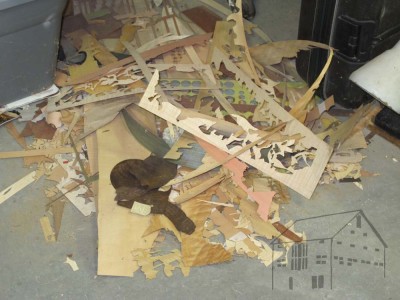
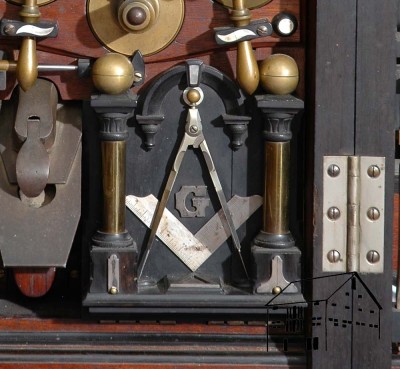

Recent Comments